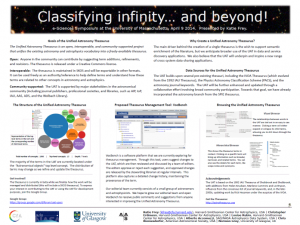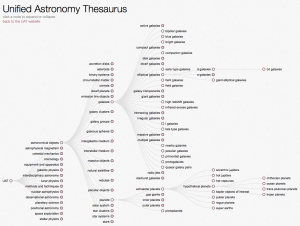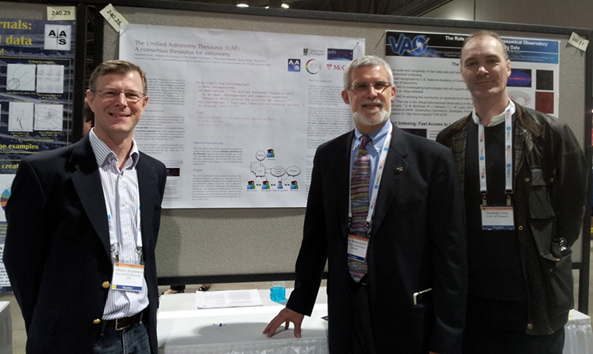Today I am releasing version one of the Unified Astronomy Thesaurus (UAT v.1).
The UAT has been completely overhauled; restructured into new top level categories and re-organized throughout. There have been many major revisions to bring it more inline with the way astronomers and astrophysicists study the universe.
I want to thank Sarah Weissman, Josh Peek, Kayleigh Bohemier, Dianne Dietrich, Jane Holmquist, Barbara Kern, and especially Jill Lagerstrom for all of the work each of you put into revising and updating the thesaurus. I also want to thank the many researches and scientists who lent their expertise to this project. Because of all of you, every term in the UAT was looked at, revised, edited, tweaked, or moved.
Version 1 of the Unified Astronomy Thesaurus has 1834 terms, 11 top level categories, a depth of 10 terms, and 319 ‘related term’ links. For comparison, the beta version of the UAT had 1920 terms, 15 top level categories, a depth of 15 terms, and 224 ‘related term’ links.
In addition to the major restructuring of the UATs top level categories and overall organizational structure, 321 terms were removed, 236 new terms were added, and 95 new ‘related term’ links were added.
All thesaurus views on this website have been updated to UAT v.1. The beta version can still be accessed via the archived files on GitHub and through the UAT Explorer (choose “beta” from the version drop down menu).
Of course, the work on this project is not finished! The goal, in fact, is that it will never been finished. There are still areas in the UAT that could be further improved and new terms that could be added. We’re always interested in feedback on the UAT, and we have some long term ideas for an expansion that I am very excited about.
In the meantime, I will be presenting the Unified Astronomy Thesaurus at the upcoming AAS meeting in Kissimmie, FL on Wednesday January 6th and 12noon. Hope to see you there!




